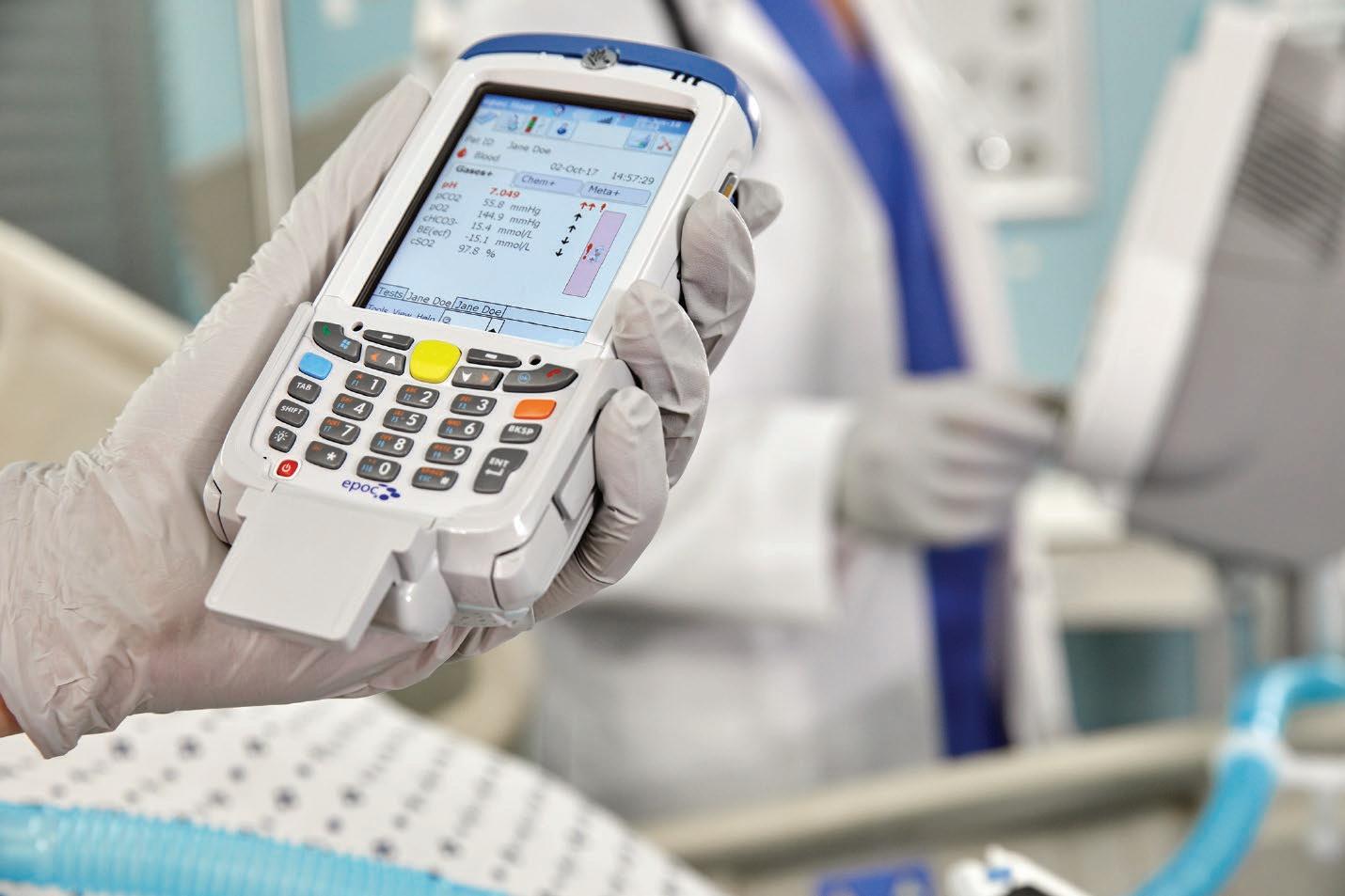IMPROVING THE DIAGNOSIS AND MONITORING OF CRITICALLY ILL PATIENTS AND THE ROLE OF BLOOD GAS TESTING
Considerations in Selecting a Blood Gas Analyzer Sophie Laurenson, BSc. BSc. (Hons.), PhD. (Cantab), EMBA, MRSNZ Blood gas analysis is one of the most frequently ordered tests for many healthcare organizations. Healthcare providers have a range of options available to meet their demands for accuracy, safety, and convenience.
Modern blood gas analyzers offer broad menus, with integrated capabilities for measuring blood gases, electrolytes, metabolites, and co-oximetry RAPIDPoint 500e Blood Gas System capillary sampling
Introduction Over the last four decades, technological advances have translated into improvements in the performance and design of blood gas analyzers. Multiple manufacturers offer analyzers with expanded testing menus for use in clinical laboratories or at the point-of-care (PoC) [36]. Healthcare providers have a range of options available to meet their demands for accuracy, safety, and convenience. Improved clinical informatics capabilities enable healthcare professionals to collect, store, and analyze test data in a secure environment, providing timely access to data for actionable clinical insights.
Assay Menu and Performance Criteria Modern blood gas analyzers offer broad menus, with integrated capabilities for measuring blood gases, electrolytes, metabolites, and co-oximetry. Menu and systems integration provides convenience for healthcare professionals
who wish to investigate multiple parameters that are relevant to patient oxygenation and metabolic status. In decentralized testing environments, this is especially important as additional clinical laboratory facilities may not be available on-demand37. One of the most critical aspects in evaluating any diagnostic assays is to assess the analytical performance. Accuracy, precision, sensitivity, and specificity are all critical metrics on which tests should be measured. PoC tests often show greater analytical imprecision compared to automated laboratory analyzers37. Comparisons between laboratory analyzers and PoC instruments require rigorous investigation to ensure that results are consistent across healthcare organizations. PoC tests generally require smaller sample volumes, which is beneficial for reducing patient discomfort when serial testing is needed38. However, lower analytical volumes may be more challenging to analyze, contributing to reduced assay sensitivity. WWW.HOSPITALREPORTS.EU | 11







